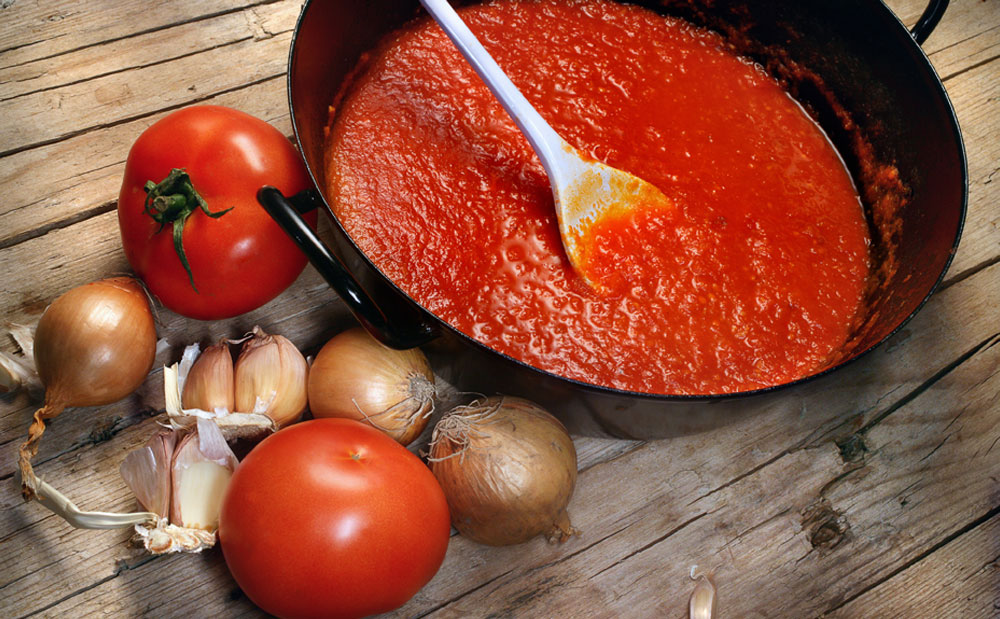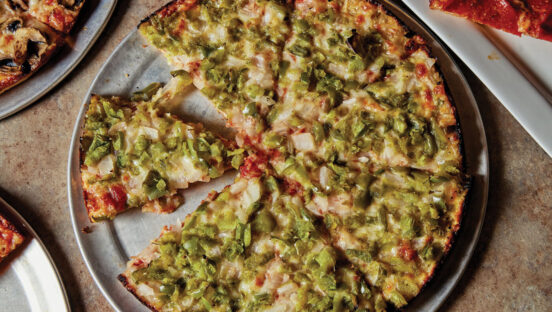“To cook or not to cook my pizza sauce? That is the question.” There seems to be a great deal of controversy over this subject; arguments can be made for and against producing a cooked and uncooked sauce.
Those pizza makers who prefer an uncooked sauce say their sauce has more “fresh tomato flavor.” This is true if you’re using tomato products that are labeled as “fresh pack,” such as from Stanislaus. These products have had minimum exposure to heat and tend to offer more fresh-from-the-garden tomato flavor. You will subject a cold-mix pizza sauce to heating only once—on the pie as it bakes. If you precook your sauce, it gets cooked twice—once during its initial production and again when you bake the pie.
Getting garden-fresh tomato flavor depends on the type of tomato product that you choose—i.e., “fresh pack” vs. “remanufactured”—as well as its manufacturer and the method for producing the product. Generally, the thicker the tomato product is, the more it has been subjected to heating (in terms of time and/or temperature) during evaporation. Manufacturers of tomato products can make numerous adjustments to yield different results in the finished product, with temperature and time being the most fundamental factors that will influence the finished product’s characteristics (such as consistency, color and flavor). The seeds and skins in the tomato product will also have an impact on those characteristics.
Many successful pizzeria operators produce cooked pizza sauce by simmering it for hours to develop that deep, robust flavor and brownish-orange color that customers seem to enjoy. Cooking the sauce also produces a wonderful aroma, which adds to the restaurant’s ambience. However, the volatilization of aromas and flavors during the initial cooking process isn’t the best thing for the finished pizza—once volatilized, the flavors and aromas become diminished/reduced.
In fact, many reactions take place during the cooking process. These include caramelization of the sugars contained in the tomato products; evaporation of moisture (if you’re cooking it in an open-top pot or kettle); and the release of volatile oils from seasonings and spices. By cooking the sauce prior to baking the pizza, you are exposing that sauce to increased heating time, which will give the sauce even more of a “cooked flavor.” Depending on the type and amount of toppings used in conjunction with the cooked sauce, one may experience a scorched or burnt flavor in the resulting pizza, particularly if toppings are kept to a minimum.
As I mentioned, arguments can be made for and against producing a cooked and uncooked sauce. Ultimately, it all comes down to a matter of preference. Personally, I have enjoyed pizzas made with cooked and uncooked sauces over the years.















